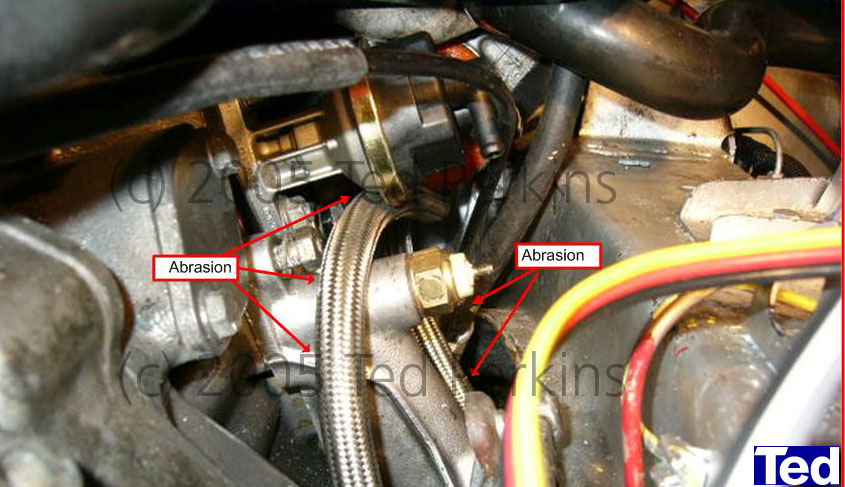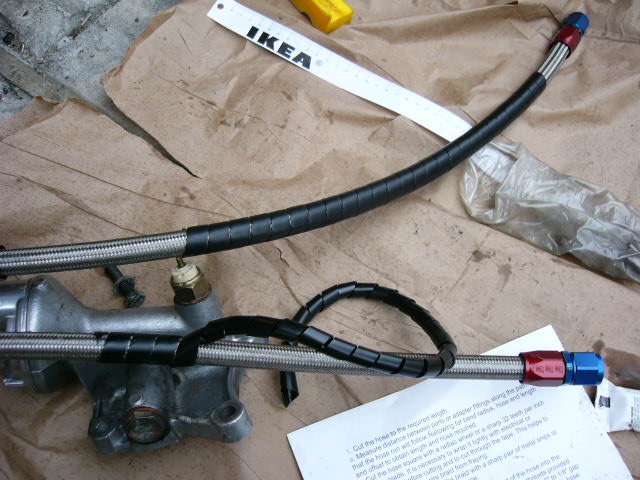| Now it's time to talk about Problems. |
| Pretty much all the problems with this installation
are attributable to motion. Well, it's a car, and cars move, so
motion must be considered. I foresee two types of motion in this
installation; high (relatively) frequency and low frequency.
High frequency is caused by the lovely lumpy pushrod motor, that is
wiggling in the range of 800 to 4000 wiggles per minute. I don't
know what the direction the wiggles go, or their amplitude, but I know
it's there. The low frequency is attributable to the
transverse mounting of the powertrain. Every acceleration, gearchange, and deceleration will cause movement between the
powertrain and the frame of the car. This is why the porkchop
mounts wear out. The powertrain rocks back & forth
constantly, and I think the amplitude is greater than one would
expect. |
| So, the problem areas on one of my test fits: |
 |
| I decided to run the hose further up & over all the
other hoses. |
| The manufacturers of the stainless steel hose is
quite candid: the stainless hose is very abrasive, and
neighboring items should be protected. Here's my solution: |
 |
| It's the slick black plastic spiral loom used to
encase wiring. It's tough, and it's slick on the outside, and it
will stay secured to the hose. |
| Low frequency vibrations. The ideal
situation would have been to mount the filter directly on the
powertrain. But I really could not find a place that afforded enough
room. Perhaps on the right side of the engine block, but that
would be next to the exhaust header, and I don't want that.
Up top? Clearance with the hood is a problem. on the front
of the transmission? Perhaps, but I do not yet have the pressure
regulator and the A/C compressor in place, so I do not know how much
room I have up there. Probably not much. So, the filter is
mounted on the right front wheelarch. So, the motor will be
moving relative to the remote mount. Make sure you
leave enough slack in the hoses to allow for movement of the
powertrain relative to the chassis. You want the hose to have
enough length to flex with the motor's movement. This will
reduce the strain on the fittings. |
| |
|
|
|